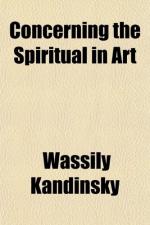But when we get still higher there is no longer this bewilderment. There work is going on which boldly attacks those pillars which men have set up. There we find other professional men of learning who test matter again and again, who tremble before no problem, and who finally cast doubt on that very matter which was yesterday the foundation of everything, so that the whole universe is shaken. Every day another scientific theory finds bold discoverers who overstep the boundaries of prophecy and, forgetful of themselves, join the other soldiers in the conquest of some new summit and in the hopeless attack on some stubborn fortress. But “there is no fortress that man cannot overcome.”
On the one hand, facts are being established which the science of yesterday dubbed swindles. Even newspapers, which are for the most part the most obsequious servants of worldly success and of the mob, and which trim their sails to every wind, find themselves compelled to modify their ironical judgements on the “marvels” of science and even to abandon them altogether. Various learned men, among them ultra-materialists, dedicate their strength to the scientific research of doubtful problems, which can no longer be lied about or passed over in silence. [Footnote: Zoller, Wagner, Butleroff (St. Petersburg), Crookes (London), etc.; later on, C. H. Richet, C. Flammarion. The Parisian paper Le Matin, published about two years ago the discoveries of the two last named under the title “Je le constate, mais je ne l’explique pas.” Finally there are C. Lombroso, the inventor of the anthropological method of diagnosing crime, and Eusapio Palladino.]




